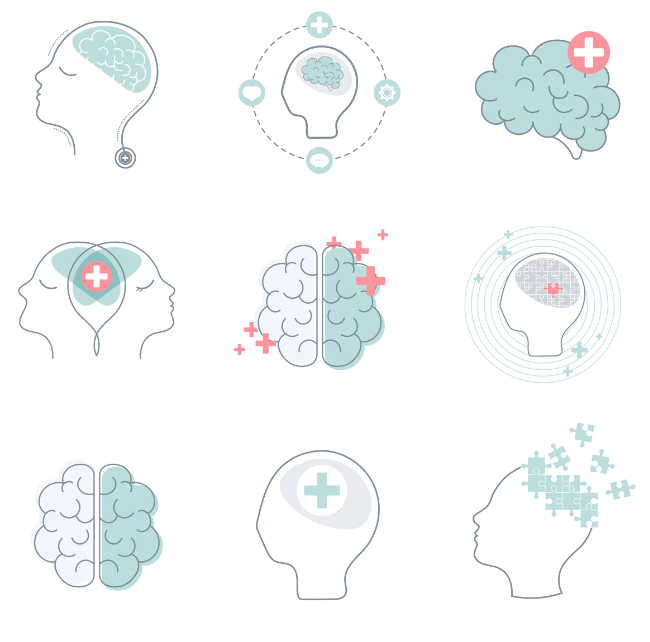The Art & Science of Meditation
Meditation has long been known to relax the central nervous system.
Making it a powerful tool for stress reduction.
The science behind the powerful healing effects of meditation has now been demystified.
Thanks to work carried out by the Dalai Lama.
Where he recruited several Tibetan Buddhist monks,
…to research how the brain responds to meditation.
This groundbreaking work has paved the way for meditation to become more mainstream.
Before it was an activity for outliers.
Now it’s estimated that 8.2 million Brits practice meditation.
The scientific evidence shows that meditation actually changes the structure of our brains.
Thanks to a process now known as “Neuroplasticity.”
And so it seems, modern science is now catching up with the ancient yogi’s wisdom.
Ironically:
Neuroplasticity was discovered while trying to prove that the brain was compartmentalised, specialised and fixed
What is neuroplasticity, and how does it work?
In the 1970’s a group of neuroscientists set out to prove that the brain was compartmentalised, specialised and fixed. Ironically they discovered that the complete opposite was true. We now know that our brains have the ability to continually change, thanks to a process called neuroplasticity.
Despite this discovery, many people still get stuck in old ways of thinking. Far too many people still believe that as we age we cannot alter our brain’s ability to function. The truth is – our brains change continually, in response to our experiences and our environment.

Meditation can improve neuroplasticity
Brain development begins in the womb. As a foetus develops, they can hear, feel and absorb all that is going on around them, even when inside their mother. It’s during this time that the baby gets acclimated to the world that they will enter.
This is known as the super learning phase. From conception until age seven we are predominantly in the alpha and theta brainwave state. This is the state that people are in during meditation and hypnosis. Long-term meditators activate all of the areas of their brain creating ultimate connectivity and reaching the gamma brain wave state.
8 types of brain wave states
Our hearts and brains are amazing. The brain contains a whopping 86 billion neurons. Where as our hearts contain around 20,000 neurons. These neurons fire and wire, producing an oscillation known as a brain wave state. This brain wave state changes depending on our mindset, desires, emotions and environment.
There are approximately 9 brainwave states.
- Infra-Low (<0.5Hz) –The foundational brainwave state.
- Delta waves (0.5 to 3Hz) – Slow and loud rhythmical brain waves experienced during deep meditation or dreamless sleep. Perfect for healing and regeneration.
- Theta waves (3 to 8 Hz) – Most beneficial for memory, intuition and learning. Theta normally occurs during sleep. The state felt before going to sleep or waking in the morning.
- Alpha waves (8 to 12 Hz) – Alpha is the resting state or calm, mental clarity – the frequency felt during mindfulness and reflective thoughts. Seen in childhood, from conception until age seven
- Beta waves (12 to 38 Hz) – the term beta covers a spectrum of waves. Beta is our normal waking state and can be split up into three areas – Beta1, Beta2 and Beta3.
- Beta1 (12 to 15 Hz) – Idle or musing
- Beta2 (15 to 22 Hz) – Figuring out, calculation and logical thought
- Beta3 (22 to 38 Hz) – Highly complex thought, uses a lot of mental energy. Felt during new experiences or excitement Staying in this state too long can harm the brain and produce nervousness and anxiety.
- Gamma waves (38 to 100 Hz) – When the mind is empty or quiet. The state above neuronal firing. Also referred to as oneness consciousness or universal love. Found in meditators that have meditated for tens of thousands of hours.
3 Supplements to improve neuroplasticity
What you eat directly impacts how your brain works. Vitamin and mineral deficiencies can damage sensitive neurons, reducing neuroplasticity. Increasing specific nutrients can help you overcome brain fog and enhance neuroplasticity. Enhancing performance, memory and learning. Here are some supplements you could consider adding to your routine to boost neuroplasticity:
-
Curcumin
Inflammation can impact your brain’s ability to function optimally. That’s one of the reasons that curcumin is a great supplement to help boost neuroplasticity. Curcumin is the bright yellow substance found in turmeric. Studies suggest that mental disorders like depression can be treated with curcumin to reduce inflammation in the brain and allow for better brain function.
-
Vitamin C
Vitamin C plays a role in many vital functions in the body. Including being a powerful antioxidant, helping clear up waste particles that could impact brain function. As well as this, vitamin C plays a role as a cofactor for many enzyme reactions. Many issues that arise in the brain are due to the accumulation of oxidative stress. Vitamin C helps mitigate this by balancing out the chemicals in the brain and cleansing out any toxic waste. Helping the brain function better.
-
Omega-3 fatty acids
Omega-3 fatty acids are vital for brain function. That’s because they help protect the cells in your brain by providing a protective fatty layer. Omega-3 fatty acids have also been found to help the brain regenerate even in the elderly. The anti-inflammatory properties of omega-3 have been found to prevent the loss of grey and white matter in the brain.
In Conclusion
The truth about meditation is finally reaching the west with scientific evidence to back it up. We often find ourselves compartmentalised inside our own mind, and meditation is a process by which we can literally free our minds from overthinking and negative thoughts. As with many wellness practices, the effects of meditation accumulate over time. When coupled with a balanced diet and supplementation where required, meditation can be a powerful tool to calm the mind.



